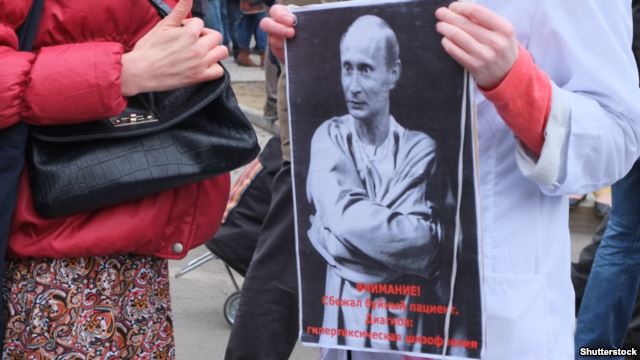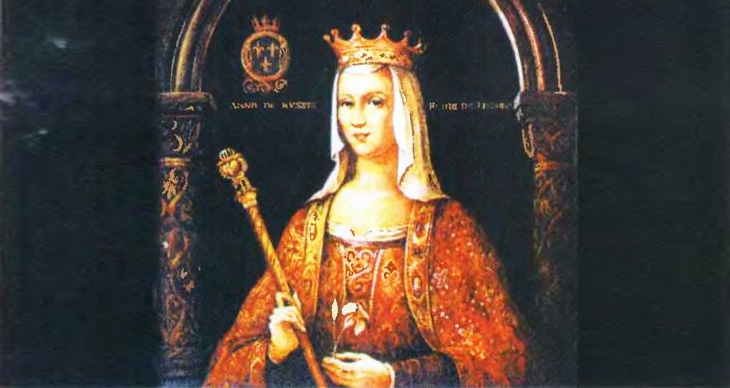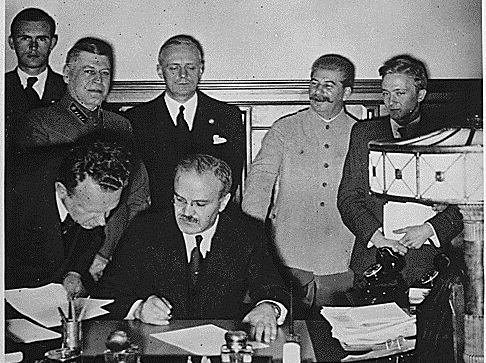In Ukraine, toppling Lenin statues fulfills a number of objectives: it’s a popular spectacle, desacrilization of old myths, destructurization of historical figures, letting off steam and overt intimidation of ideological opponents
It’s very difficult to understand Ukrainian politics as politics per se. This is often due to its pettiness, monotony and primitive character. Therefore, Ukrainians want to interpret and perceive any spectacular displays of politics differently, read it in the light of more complex phenomena, draw analogies, build bridges, connect it to other events because politics does not exist in a vacuum, but interacts with other social sectors and domains. It definitely should not be viewed in a one-dimensional manner, but rather examined closely from several aspects as it contains codes that help us understand other areas of Ukrainian society.
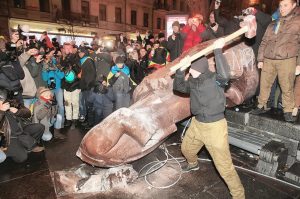
Today, most social and political life in Ukraine reflected in art revolves around the same themes: war, the annexation of Crimea, the occupied territories, reforms, decommunization, etc. These themes first pass through the prism of media, politicians and culture activists, and then make their way through the country, penetrating all layers and classes of society.
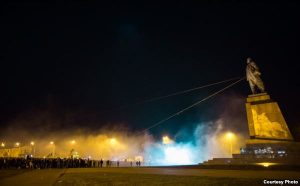
Recently, Dnipropetrovsk got rid of its monument to Soviet revolutionary Hryhoriy Petrovsky; now residents and the city council are talking about renaming the city. Two years have passed since the Lenincrash phenomenon started in Ukraine. So, it would be a sin not to examine this particular element of decommunization. Lenincrash is worth looking at from a different perspective, as a popular manifestation. Perhaps we should also consider it an artistic performance and not an act of vandalism?

The Maidan, like any major uprising, generated a flurry of folk art. Besides poetry, songs, kolomyyky, cartoons, caricatures, paintings and interesting political slogans, protesters created different and colourful means of artistic expression, such as performances, flash mobs, happenings and action events. Lenincrash fits perfectly into this context. In fact, it’s all of the fore-mentioned tied into one! And, it responds perfectly and eclectically to the desires of the Ukrainian people.
Lenincrash resembles a popular carnival… a theatrical performance with assigned roles and actions that are allowed before Christian Lent. It’s a carnival where masks are replaced by balaklavas, both of which are used for the same purpose. Don’t even try to pretend that no one will recognize you! As an actor/activist, you try to create an illusion of secrecy, a protective wall against judgments, and permission to be yourself for a while, forget about your boring daily routine and surrender to baser instincts allowed by pre-Lenten celebrations. But, you know very well that these masquerades and processions will soon end, and life won’t be all fun and buffoonery.
Like other complex popular phenomena, toppling Lenin statues fulfills a number of objectives: it’s a popular spectacle, desacrilization of old myths, destructurization of historical figures, letting off steam and overt intimidation of ideological opponents.
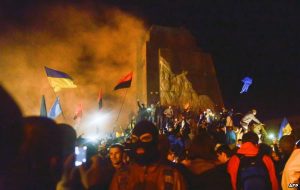
Maidan and the Middle Ages
Given so many references to the Middle Ages (alarms, tolling of church bells, taking refuge behind church walls, building barricades and fortresses, violent clashes on Hrushevskoho, etc.), and the significant role of priests and churches in the Revolution of Dignity, the Lenincrash phenomenon can be viewed as an effort by Ukrainians to unconsciously repeat an event described in Povisti Mynulykh Lit (Tale of Bygone Years): “When [Prince Volodymyr] arrived, he ordered the idols to be destroyed – some were cut to pieces and others were burnt. He ordered the god Perun to be tied to a horse’s tail and dragged from the Mountain along Borichevo [descent] to the creek, and twelve men were to beat [him] with large sticks
.”
This attempt to repeat Prince Volodymyr’s act has one objective – to desacrilize Lenin. In turn, desacrilization leads to the reconstruction of old myths and the creation of new ones, preparing the terrain for innovative ideas, cults and practices.
In addition, Lenincrash is a therapy to combat trauma caused not so much by the actual collapse of the Soviet Union, but by insufficient knowledge of traumatic experiences suffered by the Ukrainian population during this period. The symbolic act of destroying the “leader of the proletariat” and removing him from his pedestal should break all ties with the previous era, with the horrifying past, and help relieve post-traumatic syndromes. What was supposed to happen, but didn’t happen, in the eighties and nineties must be implemented now. There is great hope that such symbolic acts will make a difference.
When the Lenincrash phenomenon spread from Halychyna (western Ukraine) to all regions of the country, it demonstrated that the cult of the personality was finally debunked. Lenin is no more a sacred figure for the Ukrainian people.
Vandalism or art?
Many artists, art critics and public figures claim that Lenincrash is mere vandalism. It really could be treated as hooliganism or barbarism if artistic expression wasn’t a part of Lenin "hitting the dust".
If anyone doubts that Lenincrash has a destructurizing feature, we refer them to other performances, such as Piotr Pavlensky setting fire to the door of FSB headquarters, Pussy Riot performances, the simulated sex performance presented near the Verkhovna Rada by blogger activist Oleksandr Volodarsky, the #onvacation event performed by Ukrainian artists and activists in the Russian pavilion at the Venice Biennale, etc.
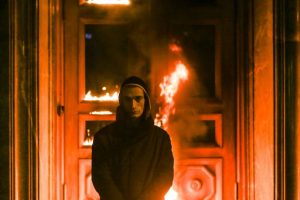
As a form of folk art, Lenincrash must appeal to the collective subconscious and to deeper instincts in order to be understood by the masses. It may cause fear in some and great joy in others. New folk art has no clear guidelines; that’s why it’s so chaotic and must grope its way forward, relying on old familiar techniques and genres.
Lenincrash is also a fight against the totalitarian regime that denied any other art but social realism, censored everything and left no room for creativity. Now, artists and critics, both leftists and libertarians, protect what was embodied in the era of censorship from actual “censorship”. There is no more instinct of self-preservation…
Finally, if we consider Lenincrash as a symbiosis of artistic techniques, we can assume that interpreting it as an act of barbarism is akin to censoring folk art. This is done by people who detest moral values and references to censorship.
No less paradoxical is the fact that many monuments to Lenin and other Soviet leaders do not have the slightest artistic value, but the people who organize such events and pull down old idols turn their action into real performance art.



